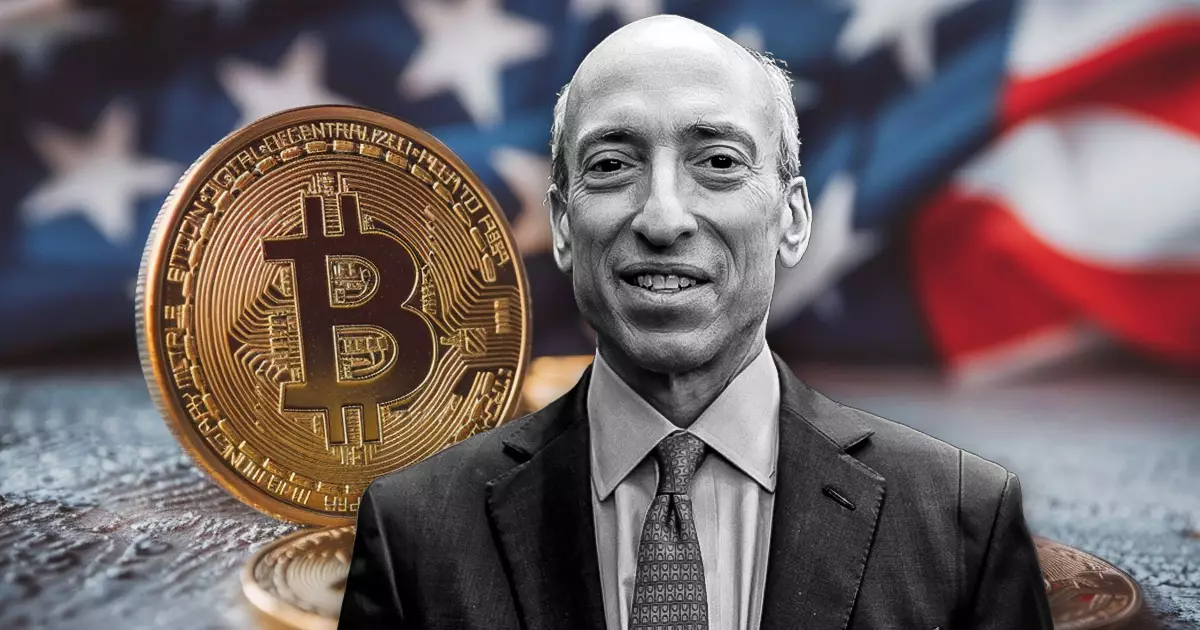On November 14, Gary Gensler, the chair of the U.S. Securities and Exchange Commission (SEC), delivered a significant address at the PLI Annual Institute on Securities Regulation. This speech not only underscored the SEC’s regulatory strategy concerning cryptocurrency but also offered a window into Gensler’s perspectives on upcoming changes in leadership—particularly in light of Donald Trump’s election. The nature and tone of his comments suggested a reflective mood, hinting at potential shifts in his role and the SEC’s direction under new political circumstances.
A central theme of Gensler’s speech was the SEC’s clear differentiation between Bitcoin and other digital assets, often referred to as altcoins. Gensler reiterated that Bitcoin is a non-security asset, an assertion previously made by his predecessor, Jay Clayton. He emphasized that the SEC has never categorized Bitcoin as a security, focusing instead on the tens of thousands of altcoins that often face scrutiny under securities laws. Gensler’s remarks served to reinforce a framework where Bitcoin is positioned as a more stable entity within the volatile landscape of crypto assets, which he suggested often engage in speculative behaviors lacking sustainable use cases.
This distinction highlights a critical challenge: while Bitcoin may be viewed as a store of value, many alternative cryptocurrencies lack intrinsic value and are created for speculation, making them more vulnerable to legal issues. Gensler pointedly noted that a significant portion of the SEC’s regulatory efforts over the past few years has been concentrated on those altcoins, hinting at a dual strategy that seeks both market confidence and investor protection.
Gensler articulated that robust regulatory oversight is vital for maintaining trust in the financial markets. He asserted, “History has shown for 90 years that robust securities regulation creates trust in markets and fosters innovation.” This appeal to historical precedent serves as a reminder of the regulatory framework that underpins traditional financial markets. By emphasizing compliance with securities laws, Gensler aimed to legitimize the SEC’s actions against certain crypto projects, pointing out that these protections ultimately serve to safeguard investors.
However, while his comments on compliance echoed a crucial message, they were counterbalanced by his acknowledgment of the predatory aspects of many digital assets. This balancing act puts the SEC in an intricate position, wherein it must nurture innovation while also deploying necessary measures against potential abuses.
Among Gensler’s more optimistic notes was his support for exchange-traded products (ETPs), specifically Bitcoin futures and spot products, as well as Ethereum ETPs. He painted these approvals as progressive steps that may enhance market access and efficiency, providing investors with better disclosure, lower fees, and increased competition. Such measures stand in stark contrast to previous leadership that had been more conservative with approvals, suggesting a turning point in the SEC’s strategy that reflects a greater integration of cryptocurrencies into the established financial ecosystem.
Moreover, these regulatory changes seem to signal the SEC’s acknowledgment of Bitcoin and Ethereum’s roles as leading players in the crypto-domain. However, these advances come with caveats, and Gensler’s comments imply he remains cautious about allowing non-compliant crypto markets to dominate the landscape.
Gensler’s reflections took on a particular significance given Trump’s historic election win, which adds a layer of uncertainty to his role at the SEC. With Trump openly critical of Gensler’s approach, the chair’s comments could be interpreted as a strategic farewell or at least a means of framing his legacy. The juxtaposition of Gensler’s regulatory stance against the prospective changes in administration creates a curious tension within the regulatory landscape.
The aftermath of the election has seen Bitcoin experience significant fluctuations, hitting peaks that point to market responsiveness to regulatory developments. A notable price surge following Trump’s victory is often linked to expectations of a more favorable regulatory environment, thereby illustrating the interconnectedness of policy decisions and market performance.
In summarizing his tenure and considering the implications of his potential departure from the SEC, Gensler provided a nuanced view of the current state of crypto regulation. His endorsement of Bitcoin, Ethereum, and stablecoins hints at a broader ideological perspective within the SEC—one that recognizes the divergent paths of these assets compared to a wide array of altcoins. While he positioned himself as a proponent of sound regulatory principles, industry leaders remain skeptical, emphasizing that true alignment between regulatory bodies and the evolving crypto ecosystem will require deeper cooperation and understanding. Whether Gensler remains at the helm or steps aside, the foundation he laid may very well influence the trajectory of crypto regulation for years to come.


















